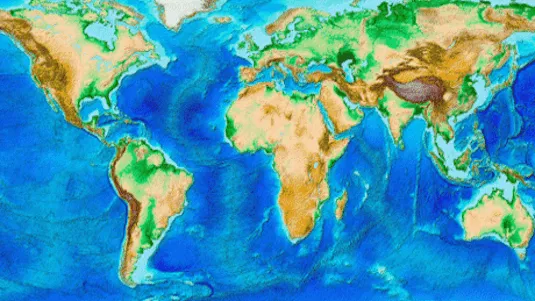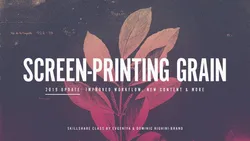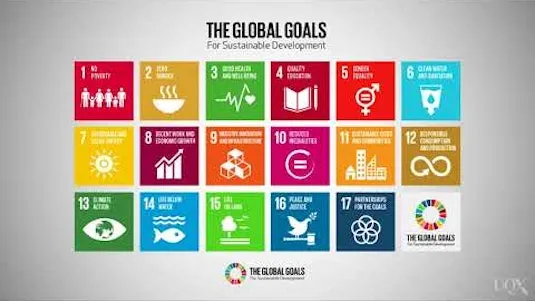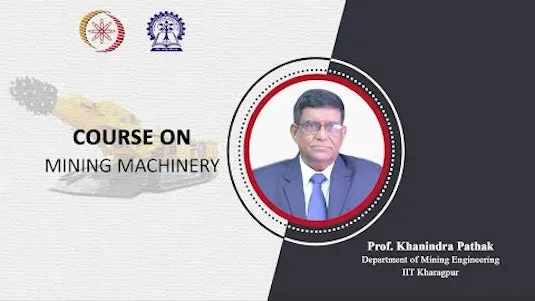
Planet Earthand You! 
This course provides an overview of the geological processes that shape our planet, from earthquakes and volcanoes to plate tectonics and mineral resources. Students will learn how these phenomena interact to create the dynamic Earth we live on today, and how they affect our environment and sustainability. ▼
ADVERTISEMENT
Course Feature
![]() Cost:
Cost:
Free
![]() Provider:
Provider:
Coursera
![]() Certificate:
Certificate:
Paid Certification
![]() Language:
Language:
English
![]() Start Date:
Start Date:
31st Jul, 2023
Course Overview
❗The content presented here is sourced directly from Coursera platform. For comprehensive course details, including enrollment information, simply click on the 'Go to class' link on our website.
Updated in [March 06th, 2023]
Planet Earthand You! is a course that provides an overview of several aspects of our home planet, from a geological perspective. Students will learn about earthquakes, plate tectonics, volcanoes, and the processes that produce energy and mineral resources. Through this course, students will gain an understanding of how the map of our planet's surface has changed over geologic time, and why present-day geologic activity occurs where it does. Additionally, students will explore the environmental and sustainability challenges that we face in the future.
[Applications]
The application of this course could include understanding the geological processes that shape the Earth, and how they interact with human activities. It could also be used to inform decisions about natural resource management, disaster preparedness, and environmental sustainability. Additionally, the course could be used to help students develop an appreciation for the complexity of the Earth's systems, and the importance of understanding them in order to make informed decisions.
[Career Paths]
1. Geologist: Geologists study the physical structure and composition of the Earth, its history, and the processes that shape it. They use their knowledge to locate and assess natural resources, such as minerals, oil, and water, and to help mitigate natural hazards, such as earthquakes and landslides. Geologists are in high demand in the energy and mining industries, and the field is expected to grow in the coming years as the demand for natural resources increases.
2. Environmental Scientist: Environmental scientists study the environment and the effects of human activities on it. They use their knowledge to develop strategies to protect and restore ecosystems, and to develop sustainable practices for resource management. Environmental scientists are in high demand in the public and private sectors, and the field is expected to grow as the need for environmental protection and sustainability increases.
3. Natural Resources Manager: Natural resources managers are responsible for managing and protecting natural resources, such as forests, water, and wildlife. They use their knowledge of ecology, geology, and other sciences to develop strategies for sustainable resource management. Natural resources managers are in high demand in the public and private sectors, and the field is expected to grow as the need for sustainable resource management increases.
4. Climate Change Analyst: Climate change analysts use their knowledge of climate science to assess the impacts of climate change on the environment and society. They use their knowledge to develop strategies to mitigate and adapt to climate change, and to develop sustainable practices for resource management. Climate change analysts are in high demand in the public and private sectors, and the field is expected to grow as the need for climate change mitigation and adaptation increases.
[Education Paths]
Recommended Degree Paths:
1. Geology: Geology is the study of the Earth, its composition, structure, and history. It is a multidisciplinary field that combines the study of physical and chemical processes, as well as the history of the Earth. Geology is a rapidly developing field, with new technologies and techniques being developed to better understand the Earth's structure and processes. With a degree in geology, you can pursue a career in research, teaching, or industry.
2. Environmental Science: Environmental science is the study of the environment and its interactions with humans and other organisms. It is a multidisciplinary field that combines the study of physical, chemical, and biological processes, as well as the history of the environment. Environmental science is a rapidly developing field, with new technologies and techniques being developed to better understand the environment and its interactions with humans. With a degree in environmental science, you can pursue a career in research, teaching, or industry.
3. Earth Science: Earth science is the study of the Earth and its components, including the atmosphere, hydrosphere, lithosphere, and biosphere. It is a multidisciplinary field that combines the study of physical, chemical, and biological processes, as well as the history of the Earth. Earth science is a rapidly developing field, with new technologies and techniques being developed to better understand the Earth and its components. With a degree in earth science, you can pursue a career in research, teaching, or industry.
4. Natural Resources Management: Natural resources management is the study of the management and conservation of natural resources, such as water, land, and air. It is a multidisciplinary field that combines the study of physical, chemical, and biological processes, as well as the history of natural resources. Natural resources management is a rapidly developing field, with new technologies and techniques being developed to better understand the management and conservation of natural resources. With a degree in natural resources management, you can pursue a career in research, teaching, or industry.
Course Syllabus
Orientation
You will become familiar with the course, your classmates, and our learning environment. The orientation will also help you obtain the technical skills required for the course.Week 1: Earthquakes!
In the lectures for this week, we will consider what an earthquake is, how it occurs, how we can record and measure its size, and what we can do to mitigate damage. Our first weekly assignment consists of reporting your own experience with earthquakes (if any). The Week 1 Lab gives you a chance to work with seismograms, locate an earthquake epicenter, and determine magnitude. Finally, the Week 1 Discussion addresses the balance between risks from quakes and costs of preventive measures.Week 2: Plate Tectonics
In the early twentieth century, publication of the hypothesis on continental drift caused an uproar that soon died down. Data collected in mid-century led geologists to reconsider the idea that continents could move. During the 1960s and 1970s, old ideas were reworked into what is now called the theory of plate tectonics. As we will see, this robust theory encompasses many geological phenomena that appear to be unrelated at first glance: earthquakes and volcanoes, but also ice ages, fossils, and mountains. Today, plate tectonics provides an overarching framework for interpreting the Earth. We study its details in Week 2, but we will return to this theory again and again throughout the rest of this course.Week 3: Volcanoes!
This week, you will learn how and where rocks can melt, and what happens when molten material of various compositions bursts out of the ground. The lecture videos also cover different types of eruptions, as well as the rocks and mountains produced by them. In the lab, you will study details about the 1980 eruption of Mount St. Helens and the eruption of Mount Vesuvius in the year 79. The discussion forum gives you the opportunity to weigh risks to people living on or near volcanoes and what can be done to minimize damage and loss of life. The weekly assignment provides a place for you to share your own experiences with volcanoes or eruptions or, if you have never been near a volcano, your thoughts about such events.Week 4: Rocks and Mineral Resources
As part of the Week 4 Assignment, you will take a close look at your daily surroundings to identify Earth resources. The video lectures for the week examine various aspects of finding, extracting, and using resources such as metals and stones. For the lab, you will utilize Google Earth to examine several mining sites around the world. In the discussion, you will weigh the pros and cons of mining operations, as many communities have had to do already. This week also includes peer grading discussions, as explained on the How Graded Discussions Work page. Finally, we provide an optional assignment for those who would like to identify some common minerals.Week 5: Energy Resources
The video lectures for this week cover various aspects of energy usage by modern civilization, especially our utilization of fossil fuels. The Week 5 Lab sends you on a Google Earth tour of energy-producing sites around the world, places where both conventional and alternative forms of energy are being generated. The Week 5 Assignment gives you a chance to survey your own personal use of energy – where does it come from and how much do you use – and then to share the information with others in the class. During the Week 5 Discussion, you will consider the implications of how society uses the energy of fossil fuels and the implications for the local environment and global climate.Pros & Cons

Challenging and informative

Clear explanations

Fun and useful Google Earth Labs

Interesting and insightful

Fun and fruitful

Solid foundation

Nice entry to geology.

Tiring forum parts

Expensive course

Unclear instructions

Broken links.
Course Provider

Provider Coursera's Stats at AZClass
Planet Earthhand You provides an overview of the geological processes that shaped their planet, from earthquakes and volcanoes to plate tectonics and mineral resources. Students will learn how these phenomena interact to create the vibrant planet they live in today, and how they affect their environment and sustainability. Through this course, learners gain a better understanding of the geological processes that shaped Earth, such as earthquakes, volcanoes, mountain building, ice ages, landslides, floods, and plate tectonics. They will understand how these processes interacted over time to form the planet they live on today.
Discussion and Reviews
0.0 (Based on 0 reviews)
Explore Similar Online Courses

Screen-Printing Grain Effect in Adobe Photoshop

Sales Force Developer: Artificial Intelligence For Beginners

Python for Informatics: Exploring Information

Social Network Analysis

Introduction to Systematic Review and Meta-Analysis

The Analytics Edge

DCO042 - Python For Informatics

Causal Diagrams: Draw Your Assumptions Before Your Conclusions

Whole genome sequencing of bacterial genomes - tools and applications

Mining Engineering

The Future of Mining?


Start your review of Planet Earthand You!